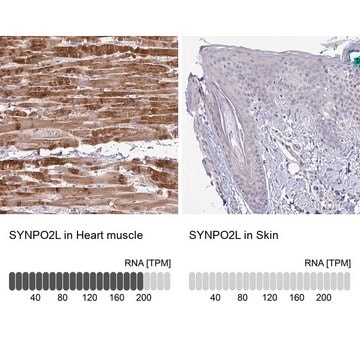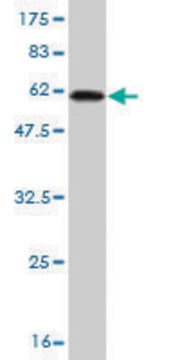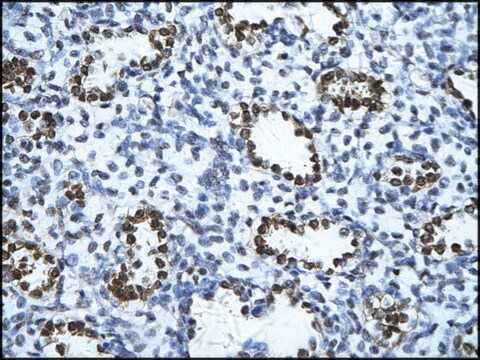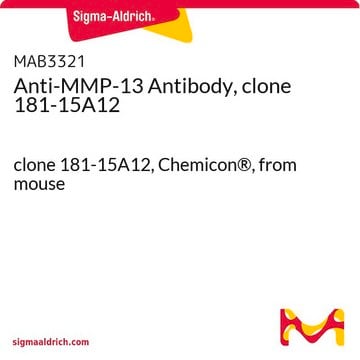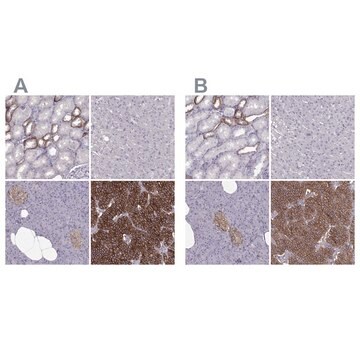HTS209RTA
Ready-to-Assay LPA 5/GPR92 Lysophospholipid Receptor Frozen Cells
Human
Faça loginpara ver os preços organizacionais e de contrato
About This Item
Código UNSPSC:
41106514
eCl@ss:
32011203
NACRES:
NA.76
Produtos recomendados
Nome do produto
Ready-to-Assay LPA 5/GPR92 Lysophospholipid Receptor Frozen Cells,
fonte biológica
human
fabricante/nome comercial
Ready-to-Assay
técnica(s)
calcium flux assay: suitable
nº de adesão NCBI
método de detecção
fluorometric
Descrição geral
Millipore′s Ready-to-Assay GPCR frozen cells are designed for simple, rapid calcium assays with no requirement for intensive cell culturing. Millipore has optimized the freezing conditions to provide cells with high viability and functionality post-thaw. The user simply thaws the cells and resuspends them in media, dispenses cell suspension into assay plates and, following over night recovery, assays for calcium response.
Lysophosphatidic acid (LPA) is a lysophospholipid produced by activated platelets that inhibits adenylate cyclase and stimulates DNA synthesis, changes in cell morphology, and increases in intracellular calcium in a variety of cultured mammalian cells. A growing family of GPCRs mediates the biological effects of LPA. The first LPA receptors described, LPA1-3, share relatively high sequence similarity and are related to the sphingosine 1-phosphate receptors S1P1-5 (Contos et al., 2000). Two more recently characterized LPA receptors, LPA4 and LPA5, are related to each other but are more distantly related to LPA1-3. LPA5, originally known as GPR92, mediates LPA-induced cytoskeletal changes, intracellular calcium flux and increased cAMP by coupling to G12/13, Gq, and Gs. (Lee et al., 2006). In addition to binding LPA, LPA5 is also activated by several other lipid-derived molecules, the most potent of which is farnesyl pyrophosphate (Oh et al., 2008). GPR92 is expressed in several tissues, most prominently in the CD8+ intraepithelial lymphocytes of the gastrointestinal tract (Kotarsky et al., 2006). Millipore′s cloned human LPA5-expressing cell line is made in the Chem-1 host, which supports high levels of recombinant LPA5 expression on the cell surface and contains high levels of the promiscuous G protein Gα15 to couple the receptor to the calcium signaling pathway. Thus, the cell line is an ideal tool for screening for agonists, antagonists and modulators at LPA5.
Lysophosphatidic acid (LPA) is a lysophospholipid produced by activated platelets that inhibits adenylate cyclase and stimulates DNA synthesis, changes in cell morphology, and increases in intracellular calcium in a variety of cultured mammalian cells. A growing family of GPCRs mediates the biological effects of LPA. The first LPA receptors described, LPA1-3, share relatively high sequence similarity and are related to the sphingosine 1-phosphate receptors S1P1-5 (Contos et al., 2000). Two more recently characterized LPA receptors, LPA4 and LPA5, are related to each other but are more distantly related to LPA1-3. LPA5, originally known as GPR92, mediates LPA-induced cytoskeletal changes, intracellular calcium flux and increased cAMP by coupling to G12/13, Gq, and Gs. (Lee et al., 2006). In addition to binding LPA, LPA5 is also activated by several other lipid-derived molecules, the most potent of which is farnesyl pyrophosphate (Oh et al., 2008). GPR92 is expressed in several tissues, most prominently in the CD8+ intraepithelial lymphocytes of the gastrointestinal tract (Kotarsky et al., 2006). Millipore′s cloned human LPA5-expressing cell line is made in the Chem-1 host, which supports high levels of recombinant LPA5 expression on the cell surface and contains high levels of the promiscuous G protein Gα15 to couple the receptor to the calcium signaling pathway. Thus, the cell line is an ideal tool for screening for agonists, antagonists and modulators at LPA5.
Descrição de linhagem celular
- GPCR Cell Lines
- Host cells: Chem-1
Aplicação
Human LPA5 / GPR92 GPCR frozen cells for Calcium Flux FLIPR Assays.
Ações bioquímicas/fisiológicas
- GPCR Class: A
- Protein Target: LPA5 / GPR92
- Target Sub-Family: Lysophospholipid
Componentes
Pack contains 2 vials of mycoplasma-free cells, 1 ml per vial.
Fifty (50) mL of Media Component.
Fifty (50) mL of Media Component.
Exoneração de responsabilidade
This product contains genetically modified organisms (GMO).
Within the EU GMOs are regulated by Directives 2001/18/EC and 2009/41/EC of the European Parliament and of the Council and their national implementation in the member States respectively.
Código de classe de armazenamento
10 - Combustible liquids
Classe de risco de água (WGK)
WGK 1
Ponto de fulgor (°F)
Not applicable
Ponto de fulgor (°C)
Not applicable
Certificados de análise (COA)
Busque Certificados de análise (COA) digitando o Número do Lote do produto. Os números de lote e remessa podem ser encontrados no rótulo de um produto após a palavra “Lot” ou “Batch”.
Já possui este produto?
Encontre a documentação dos produtos que você adquiriu recentemente na biblioteca de documentos.
Nossa equipe de cientistas tem experiência em todas as áreas de pesquisa, incluindo Life Sciences, ciência de materiais, síntese química, cromatografia, química analítica e muitas outras.
Entre em contato com a assistência técnica
